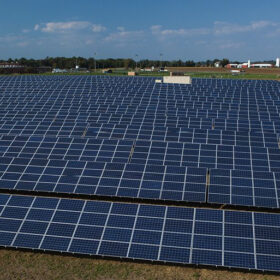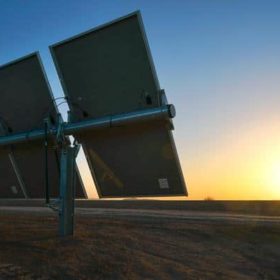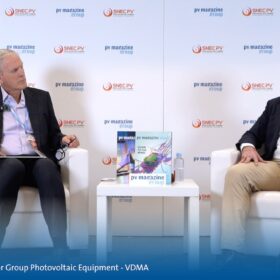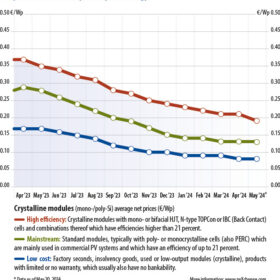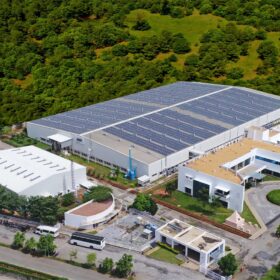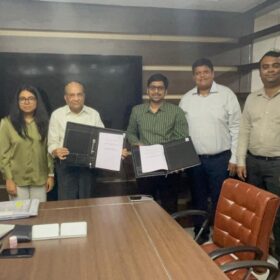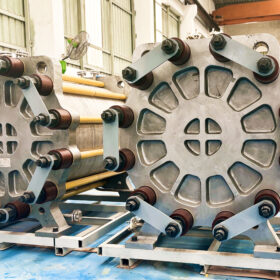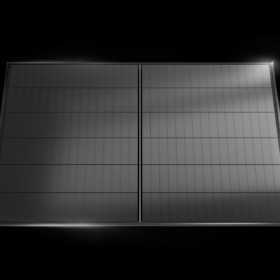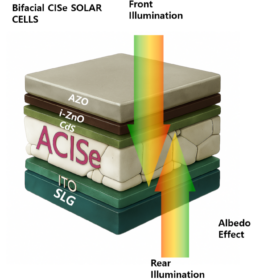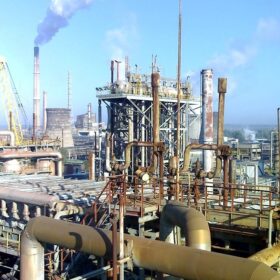Trina Solar probing potential breaches of TOPCon patents
Trina Solar says it has started evaluating potential violations of some of its patents for tunnel oxide passivated contact (TOPCon) tech. One of the patents focuses on the number of busbars and their width in TOPCon solar panels.
Solar module capacity on ALMM list exceeds 50 GW
The solar modules included in the Approved List of Models and Manufacturers (ALMM) comply with the BIS standards and meet the module efficiency criteria set by the Ministry of New and Renewable Energy for utility-scale, rooftop and solar pump, and solar lighting applications.
VDMA expects copper metallization to take off in next 2 years
At SNEC 2024 in Shanghai, pv magazine spoke with Puzant Baliozian, lead consultant of sector group photovoltaic equipment for Germany’s Machinery and Equipment Manufacturers Association (VDMA). He says tunnel oxide passivated contact (TOPCon) technology will dominate the solar market in the next 10 years and expects module manufacturers will compete to develop more creative product designs. He also believes that copper metallization will gain market share in heterojunction (HJT) module production in the next years. “In the upcoming decade, we will have less than mg/W of silver being used for both TOPCon and HJT technologies,” he stated.
Chinese solar cell maker to build 10 GW factory in Oman
Chinese solar cell maker Hainan Drinda New Energy Technology plans to build a 10 GW factory in Oman to produce tunnel oxide passivated contact (TOPCon) solar cells.
IEA-PVPS releases fact sheet on environmental life cycle assessment of PV Systems
The updated IEA PVPS Task 12 Fact Sheet provides a comprehensive assessment of the environmental impacts associated with PV systems. It highlights the significant advancements made in PV technology, emphasizing improved efficiencies and reduced environmental footprints.
Low prices for TOPCon solar panels put pressure on PERC
In May 2024, high-efficiency panels, predominantly glass-glass modules equipped with tunnel oxide passivated contact (TOPCon) cells began to converge on price with mainstream offerings, writes Martin Schachinger, of pvXchange. Production volumes for these negatively-doped, “n-type” cells and modules have been ramped up in China while the increasingly restrictive customs situation in the United States may already be having an impact. For the European market, ever-lower prices for the latest module technology would suggest that demand would continue to rise were it not for a number of disruptive factors.
Gautam Solar to showcase TOPCon glass-glass bifacial panels at Intersolar Europe 2024
Gautam Solar’s TOPCon glass-glass bifacial panels are available in power range of 580 Wp to 590 Wp with maximum efficiency up to 22.84%.
Emmvee secures 795.4 MWp TOPCon DCR module supply order for NTPC Khavda project
Emmvee Group will supply 795.4 MWp of TOPCon DCR modules for NTPC Renewable Energy Ltd’s Khavda solar project in Gujarat.
JinkoSolar hits highest conversion efficiency with 182 mm TOPCon module
JinkoSolar says its 182 mm tunnel oxide passivated contact (TOPCon) solar module has achieved a conversion efficiency of 25.42%.
The future of solar energy: How R&D can bridge the gap between supply and demand
Continued investments in research and development, particularly in areas like advanced battery storage technologies and next-generation solar cell materials, coupled with supportive policies and global collaboration can unlock the full potential of solar energy and pave the way towards a brighter, more sustainable future.
